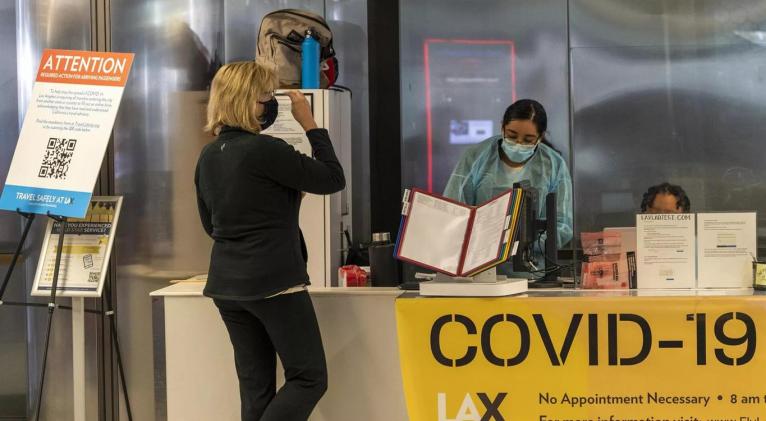Highly Contagious COVID Strain Could be Responsible for Major Future Spike - Report
especiales

A health official told the outlet that XEC has spread relatively quickly and has been reported in Germany, the Netherlands and in other parts of western Europe.
Doctors and scientists are tracking yet another COVID subvariant named XEC which could surpass the latest hyper infectious subvariant, KP.3.1.1 which is believed to be the most common subvariant across the US, currently.
The subvariant XEC was first detected in Germany and is “just getting started now around the world and here” a California-based doctor told the Los Angeles Times. “And that’s going to take many weeks, a couple months, before it really takes hold and starts to cause a wave.”
“XEC is definitely taking charge. ...That does appear to be the next variant,” the source added. “But it’s months off from getting into high levels.”
Currently, the XEC subvariant isn’t so widespread and is not being tracked on the US Centers for Disease Control and Prevention’s (CDC) variant tracker website, the LA Times report explained.
Yet, the updated COVID vaccines that US officials approved in late August are designed against the strain KP.2 which is effective against the current circulating variants. It is not, however, effective against XEC, as the latest vaccine was designed against something substantially different from this newer strain that seems to be biding its time.
“It would be surprising if this doesn’t turn out to be the next challenge,” the health official added.
For the two-week period that began on August 18, the strain KP.3.1.1 was estimated to make up over 42% of coronavirus samples across the US, which is up 19.8% a month ago, the report said citing the CDC. It is still believed to be the US’ most common subvariant.
But Dr. Elizabeth Hudson, the regional chief of infectious diseases for Kaiser Permanente Southern California, said she believed the new vaccines would provide generous enough protection against XEC as there is “some overlap, because these are all sub, sub, sub-grandchildren of the original Omicron. So there is still going to be some level of protection there.”
“We’re not like in a new Greek letter — they’re not that much different; it’s not like something completely new,” the regional chief explained. She added that XEC is a recombination of the sub variants KS.1.1 and KP.3.3, but it is different in the fact that it seems to be showing a “growth advantage over JN.1 or the deFLuQE variants or the FLiRT variants.
“It’s going to be a little hard to know where this is going to go, because right now, KP.3.1.1 really still is the predominant variant,” the health official explained. “So we have to really monitor not only what’s happening within the U.S., but also what’s happening in Europe as they get more towards their colder seasons.”
COVID, unlike the flu, is difficult to predict because it seems to come in two waves each year as opposed to one cold season wave.
“We’ll really have to watch — because the overall info on it is not super robust now — but I would imagine over the next couple of weeks, particularly if it starts to creep up higher and higher, we will be hearing a little bit more about it,” Hudson said.














Add new comment